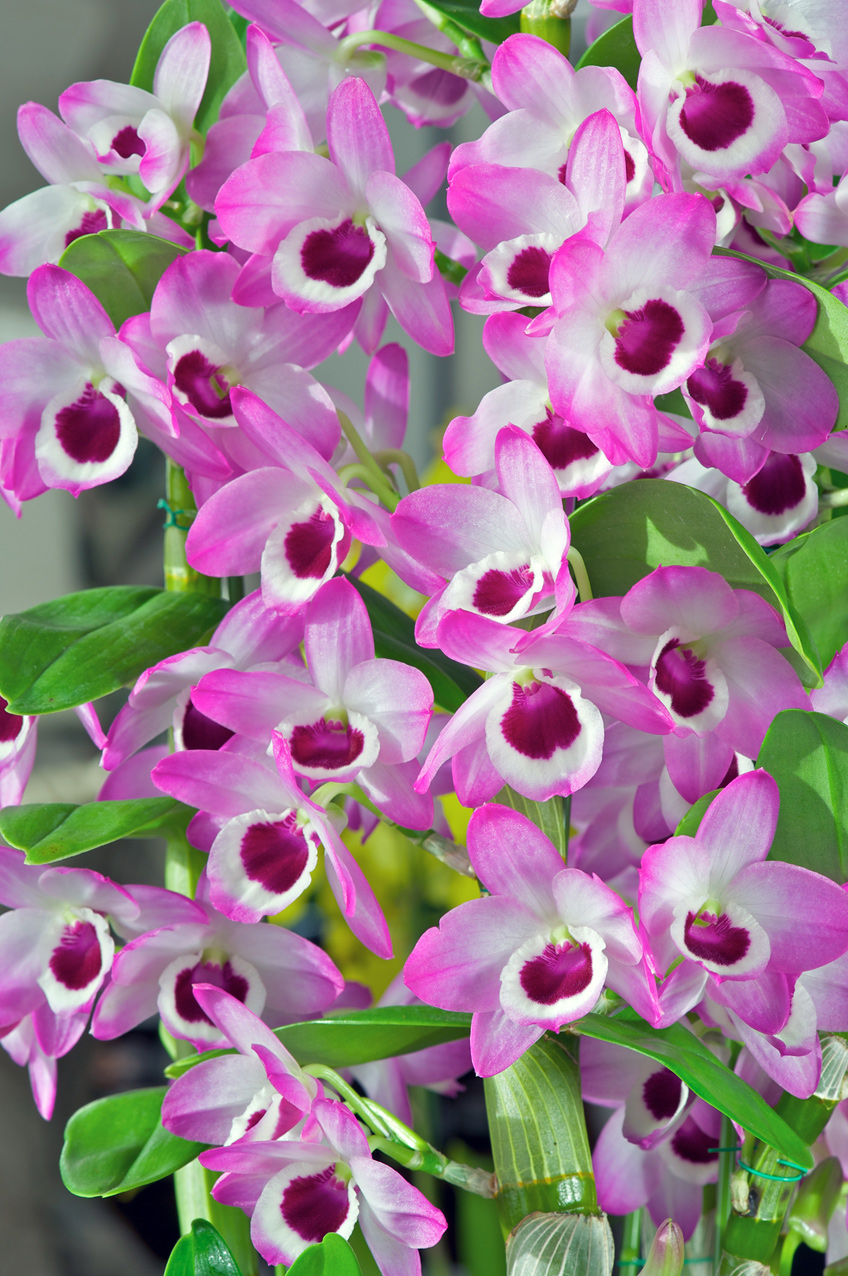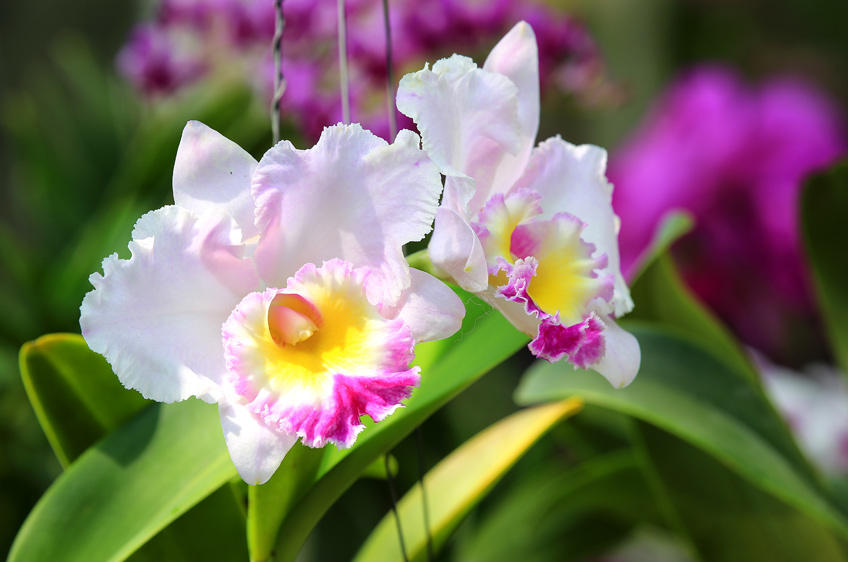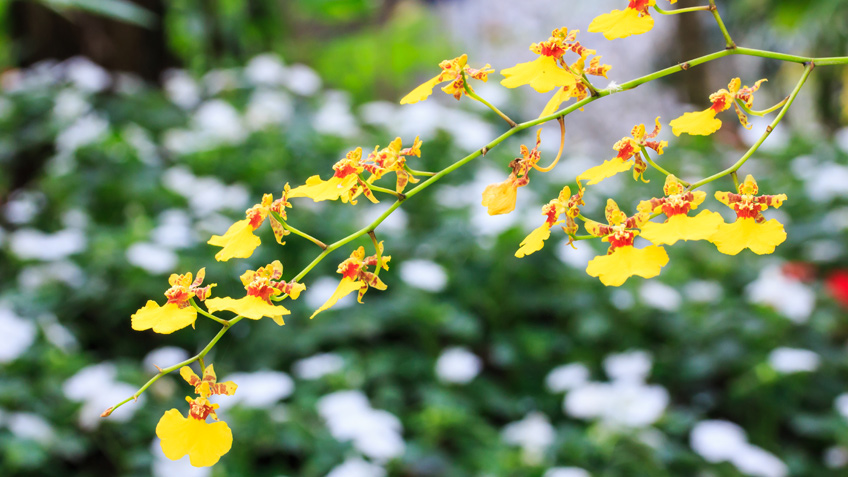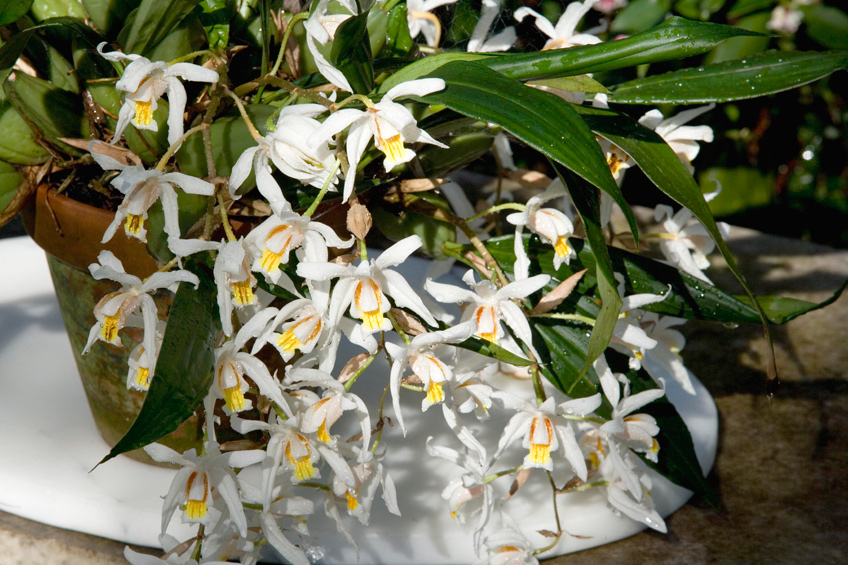The orchid family is so extensive, and so wonderful in the garden.
Here we introduce just the essential exotics for your garden. The exciting native orchids we’ll save for another day.

Photo- Robin Powell
Moth Orchids
Name: Phalaenopsis sp.
ID: elegant arcs of butterfly-winged blooms make this the quintessential florist orchid.
GROW: Prefers morning sun with 15-30 degrees C temperatures. Add humidity by placing on a saucer filled with gravel and water. Resist
chopping the finished flower stem off as the second flowering comes from this stem. Spray half-strength liquid flower fertiliser weekly. Prefers to
be root-bound. Watch out for mealy bugs.

Photo - Robin Powell
Cymbidium orchids
Name: Cymbidium sp.
ID: Long sprays of long-lasting plum, pink, green or white orchids in winter.
GROW: Filtered sun is needed to flower well. Too much shade will result in no flowers; too much sun in fried leaves. Keep damp, not wet.
Wipe leaves clean with ecoOil. Use a specialist orchid mix when repotting and try and keep 4-5 bulbs together.

Photo- Paul Atkinson / Shutterstock.com
Softcane dendrobiums
Name: Dendrobium nobile
ID: Flowers are purple-mauve with a yellow centre and offer a 2-3 week show.
GROW: This Asian orchid likes to nestle in the crooks of trees in frost-free zones. Needs dappled light; too much shade will induce leaf
growth. During summer give plenty of water, plus orchid food after flowering and when new shots appear. In winter reduce water and increase light.

Photo - Kamonrat / Shutterstock.com
Cattleya
Name: Cattleya sp.
ID: flamboyant flowers make the perfect corsage!
GROW: These air-growing orchids prefer temperatures of 15-30 degrees C and high humidity and need good light to flower. Consider bringing
them under cover in winter to keep them dry. Checklist - coarse mix, good drainage and shallow pots. Watch out for tip-munching snails and mealy bug.
Add liquid feed to water every second watering.

Photo - Itman__47/ Shutterstock.com
Dancing Ladies
Name: Tolumnia syn Oncidium
ID: Golden sprays of tiny flowers. Also seen in brown and burgundy.
GROW: This is a beginner’s orchid that’s easy to grow. Use chunky bark mix in pots and place in morning sun. Fertilise plants when actively
growing. Bring inside in flower to enjoy the show. Mount on trees only if you can water them daily.

Photo- Sylvie Lebchek/ Shutterstock.com
Crucifix orchids
Name: Epidendrum secundum
ID: Spherical clusters of little flowers in gold, ruby, amethyst, coral and amber tones.
GROW: Easy-to-grow, ever-flowering, garden-friendly orchids grow 1 x 1m. Plant in loose bark, water and feed well while flowering. Take
air cuttings - pieces that have naturally sprouted aerial roots – to share. Shop on eBay for great colours. Seriously!

Photo- Robin Powell
Slipper orchids
Name: Paphiopedilum
ID: Large slipper-like flowers on long stems bloom in late winter among the rocks in the shade.
GROW: Try them in pots under trees in leaf litter or treat them like African violets and grow them inside. Don’t overwater. Feed with
half-strength liquid fertiliser every second watering during the growing season.

Photo- Holly Kerr-Forsyth
Ceologyne
Name: Ceologyne
ID: Long-lasting, usually fragrant, sprays of pendulous white flowers in September.
GROW: Cool-climate orchids of this genus can be grown easily without winter heating. Water heavily during the growing season and reduce
during winter. Avoid repotting often as they sulk after root disturbance. Feed late summer – early autumn. Bark or sphagnum-lined hanging baskets allow
perfect viewing.